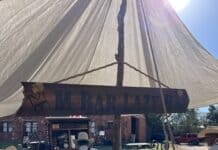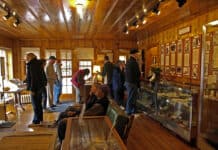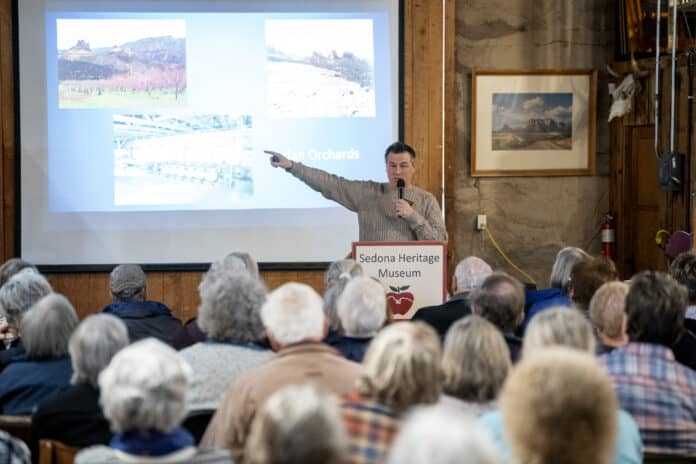
Jim “JJ” Thompson was the Sedona area’s first permanent white settler in 1876 when he established a residence in Indian Gardens in Oak Creek Canyon, a name he personally bestowed upon his homestead. The tale goes that he “discovered” flourishing melon, corn and squash gardens along the Oak Creek banks and decided to cultivate them.
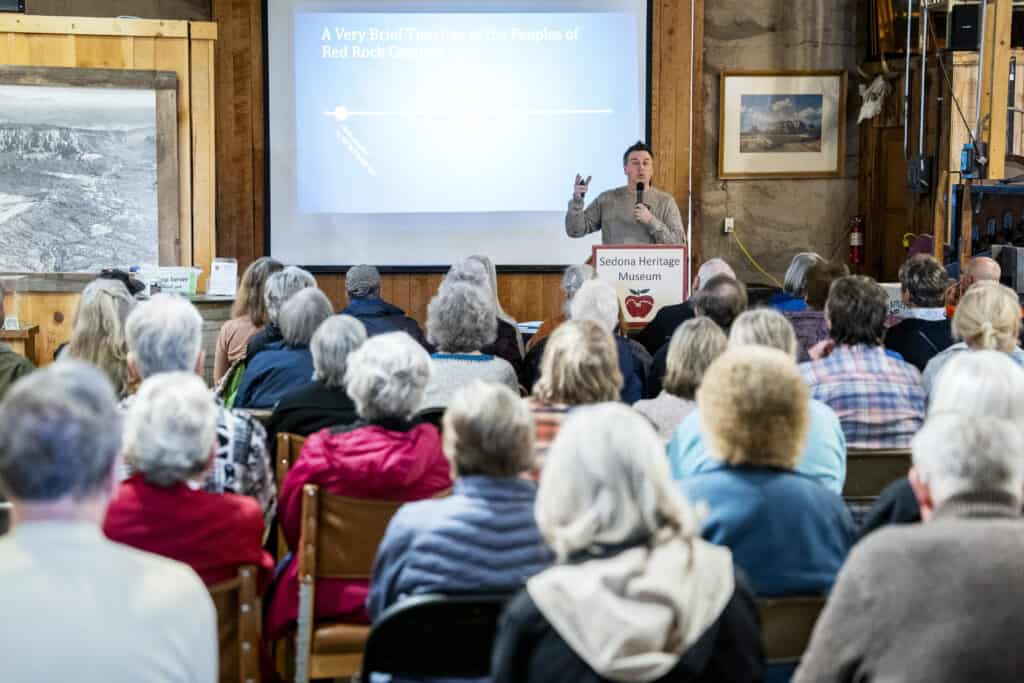
The focus of Sedona Historical Society Executive Director Nate Meyers’ “Reinterpreting Sedona’s History” talk on Thursday, Jan. 25, was taking familiar stories such as Thompson’s and reexamining them with regard to additional factors such as hydrology and actions by the federal government that likewise affected the evolution of Sedona’s past. Meyers pointed out that Thompson did scout land for homesteading along Oak Creek, but that the gardens he found weren’t abandoned and therefore cannot be considered to have been discovered.
“The way homesteading worked, the homesteader had to make a claim in Prescott, Arizona’s territorial capital,” Meyers said. “Thompson traveled to Prescott to make his homestead claim on this fertile land with plentiful access to water. Then he traversed the mountains over to Fort Verde where he presented his claim. Soldiers from Fort Verde removed the band of Apaches farming that land, clearing the way for Thompson to make his homestead. So we see that the story of Thompson and other early homesteaders is part of the long history of Indian removal. Sedona’s history is not immune from this regrettable federal policy.”
Meyers’ ancestors in the 18th century also benefited from the policy of Indian removal, he said.
“My maternal grandfather’s family came from Germany in 1721 and settled near Albany, New York,” Meyers explained. “After serving in the Revolutionary War, later generations in the 1780s were granted farm land by New York State in lieu of pay for their military service. That land was on the frontier, which at that time put the land grant east of today’s Syracuse.
“It was land that belonged to the Onondaga and Oneida peoples, in the heart of Haudenosaunee, or Iroquois, country. To show the lasting impact of Indian removal, my family and others remained in that area for centuries — I was born in Syracuse, grew up in Oneida, and my mother still lives on a small piece of land that comprised that 1780s land grant.”
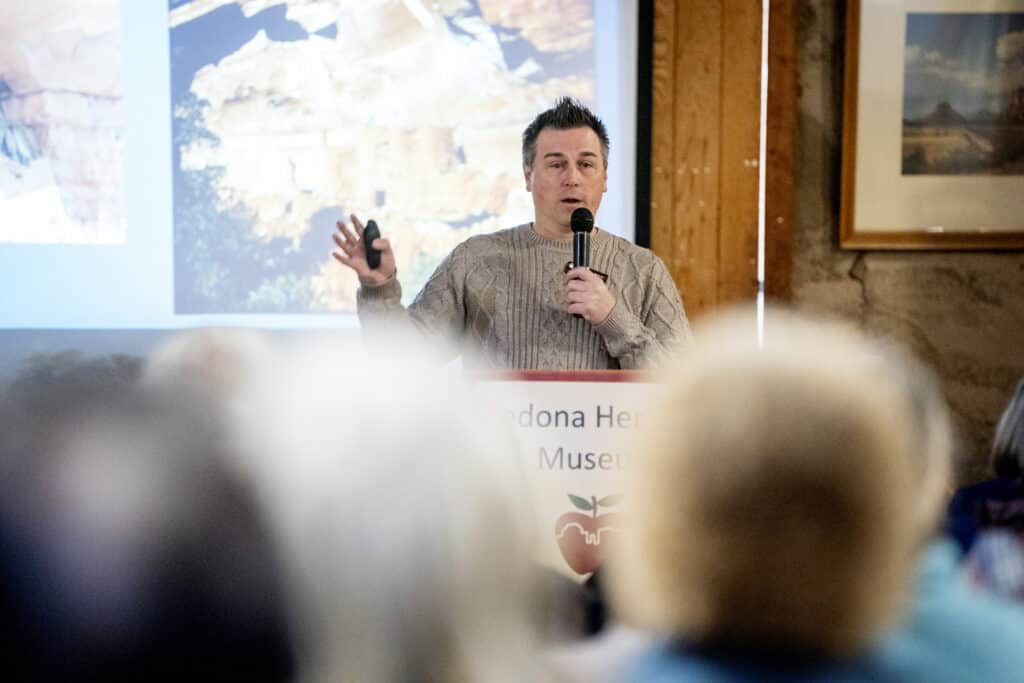
In the western part of the country, the Homestead Act of 1862 and the policy of American Indian removal were inseparable, with both approaches reinforcing each other. “While the Spanish and others of European descent start coming to this area in the 16th century, other people called red rock country home at that time,” Meyers said, pointing out that Fort Verde itself was established to enforce the land claims of white homesteaders in the Verde Valley.
“The Yavapai and Apache peoples lived in this area, clustering in settlements along the Verde River and Oak Creek,” Meyers said.
“The better story is the fullest story,” he later said. “We can tell ourselves, we can make up things, we can jump to conclusions, that makes us feel good. But … history can make us uncomfortable, and we’re better people for addressing and acknowledging that discomfort. We have a better idea of the history of our community by accepting it, rather than ignoring it, or telling stories that are feel-good stories.”
“I had that in mind, as I was talking about, my family’s legacy,” Meyers said. “We all have inherited this legacy, and it’s not our fault, what our ancestors did. You can never make it right. But you can start to do the right thing by acknowledging it and having discussions about it rather than ignoring it.”
Meyers noted that prior to the 19th century, settlements in the Verde Valley were clustered along perennial waterways such as the Verde River, Oak Creek, the Agua Fria and Tonto Creek to the southeast.
“About 650 CE is when we begin to see in the archaeological record the emergence of the peoples we call Sinagua,” Meyers said. “We do not know what they called themselves. ‘Sinagua’ is a misnomer. It was coined by archaeologist Harold S. Colton, who uncovered evidence of the culture around Flagstaff, where there are no perennial surface water sources. The lack of surface water led him to name the culture Sinagua — Spanish for ‘without water.’”
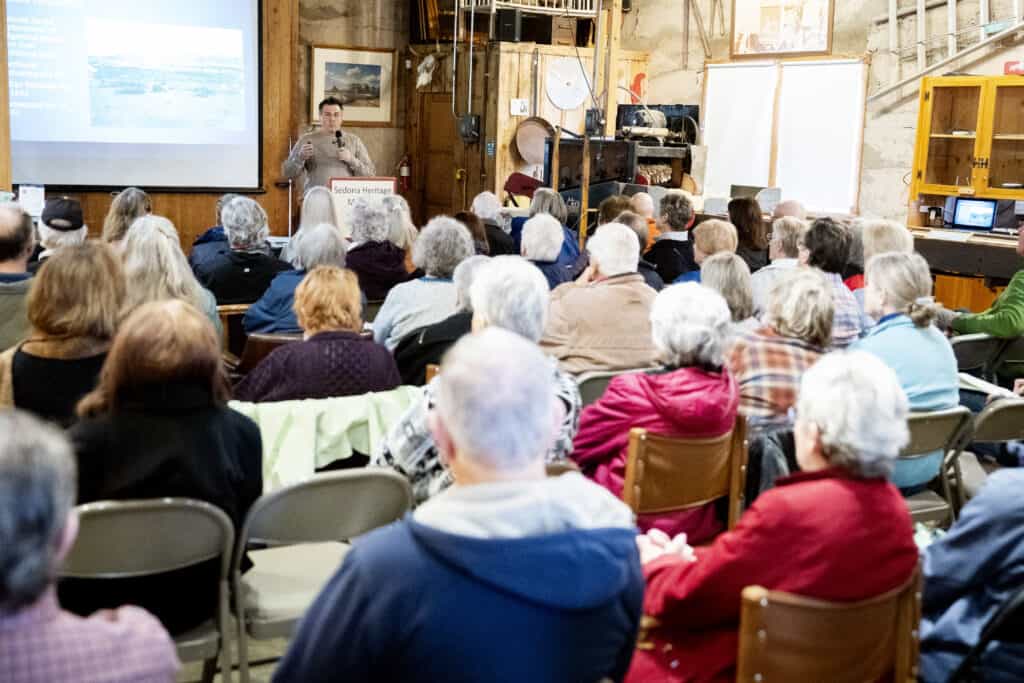
The Sinagua people appeared to have settled in the Verde Valley between 650 and 1400 CE. The cliff dwellings at Honanki and Palatki, now major tourist destinations, are notable examples of Sinagua culture in the area. Although not the only cliff houses in the area, these constructions were used by the Sinagua people in the Verde Valley during their latter years.
Meyers proceeded to cover the modern history of irrigation in the Verde Valley and how it allowed commercial agriculture to take root. This set the stage for the Jordan family’s arrival in 1931.
“They were not pioneers in the traditional homesteading sense,” Meyers said. “They arrived in Sedona … with plenty of money in their pockets to get their orchards started. This is because they came to Sedona fresh off winning one of the first environmental lawsuits in American history. Their original orchards were in Clarkdale. The smoke belching from the smelter killed their trees. They sued United Verde Mining Company and won. Chemical samples and dead plant matter which were used as evidence at trial are part of our collection here at the museum.
The Jordans were truly pioneers — not as homesteaders, but in environmental law. Rather than replant in the shadow of the smelter towers and risk another disaster, they moved across the Verde Valley and put down roots here in Sedona. This site operated as an orchard into the 1970s.”
Meyers’ presentation was part of the Sedona Stories lecture series, which is free to attend. Lectures are presented at 10 a.m. at the Sedona Heritage Museum. The next program will be “Historic 1892-1901 Flagstaff to Grand Canyon Stage Coach Road” by Neil Weintraub on Thursday, Feb. 29.
















